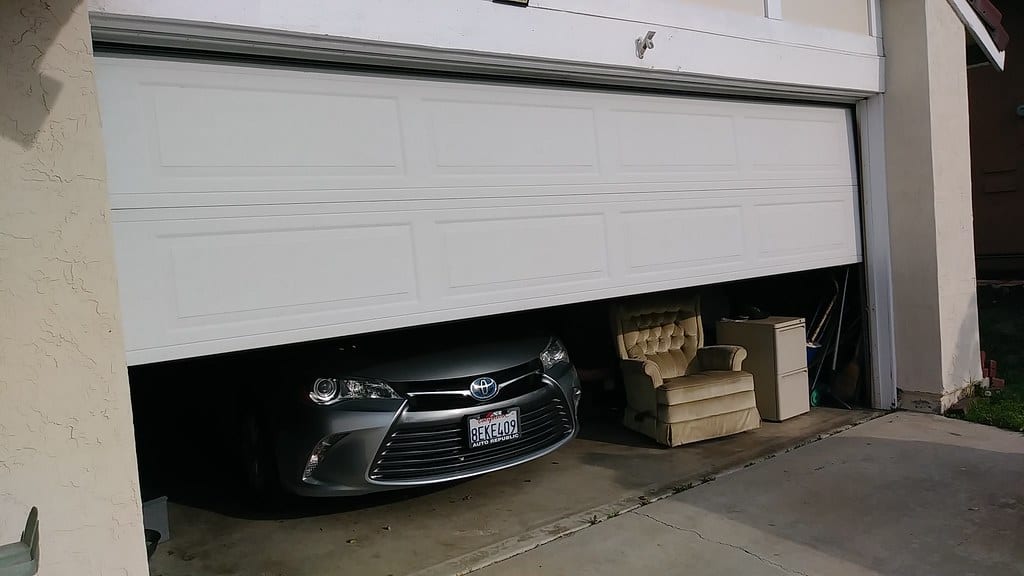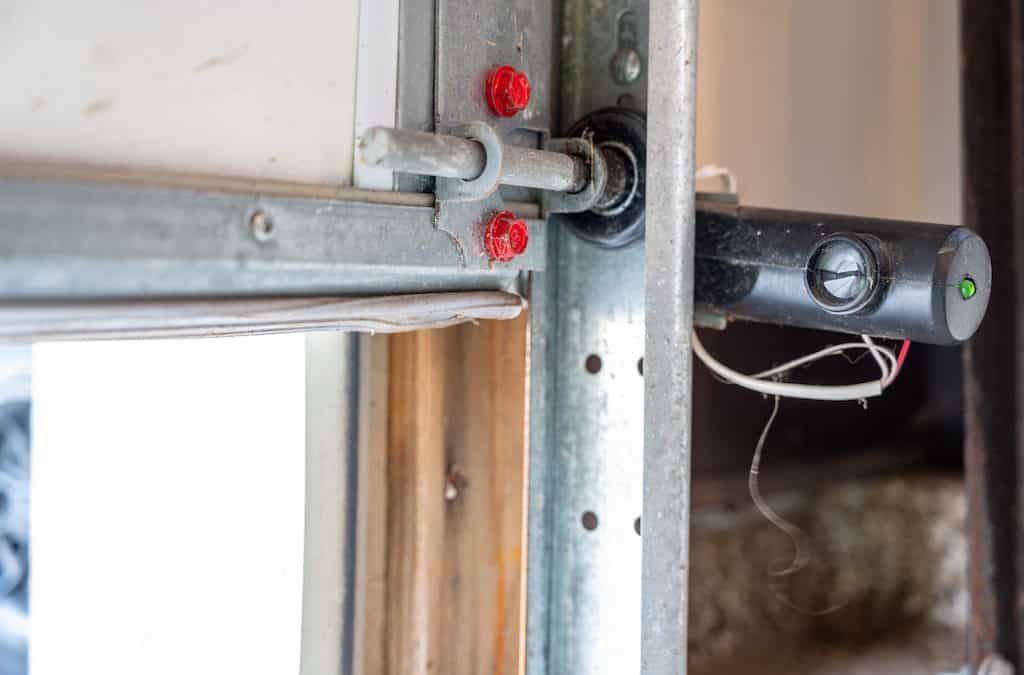Your garage door sensor is a critical part of the door’s makeup. The law requires that garage doors have functional safety sensors because the weight of this door can cause serious damages, injuries, and even death. It’s important that you understand how to troubleshoot your door sensors so you can always keep this part of your garage in working condition.
Requirements for Garage Door Sensors
Garage door sensors are a requirement of UL325. This safety standard, set forth by Underwriters Laboratories, applies to all electric operators for doors, windows, gates, louvers, or draperies that are rated at 600 volts or less. The full UL325 standards are quite complex, but there are a few key points that apply to residential garage doors. These standards require:
- Inherent Entrapment Protection: The door must feature RPM sensors that will cause the door to reverse if it comes into contact with an obstruction as it’s closing.
- Secondary Entrapment Protection: Secondary sensors, which are typically photo-electric eye sensors, are required. These should detect any obstruction in the path of the door that’s 6 inches or taller. If an obstruction is present, the door will refuse to close.
- Manual Release Cord: The garage door must have a manual release cord that allows you to disconnect the door from the motor in an emergency. This cord typically hangs from the rail of the garage door.
- Wireless Technology: Any wireless technology that’s incorporated in the system must meet the previous standards and prevent the door from closing when an obstruction is present. Garage doors may not use any form of technology that allows the user to force the door to close despite an obstruction.

Image via Flickr by Ben Baligad Licensed CC BY 2.0
The Importance of Garage Door Sensors
Garage door sensors are more than just a convenient element of your door, they’re a critical safety feature for your home. Between 1982 and 1992, garage door accidents caused about eight deaths per year among children under the age of 15. In 1990, President George H. W. Bush signed Public Law 101-608, the Consumer Product Safety Improvement Act of 1990. This federal legislation mandates that all garage door openers produced after 1993 meet the requirements set forth in UL325.
It takes only a moment for a child or pet to scurry beneath a garage door. A single garage door typically weighs at least 130 pounds, and a double door with windows will weigh closer to 350 pounds. It’s crucial that you keep proper protections in place to prevent your garage door from closing accidentally when an obstruction is in the way.
Why is My Garage Door Sensor Having Issues?
There are several common issues that you may run into with your garage door sensor. Watch for these problems.
Lack of Power
One of the most obvious problems that your door sensor may experience is a lack of power. If the garage door sensor is cut off from the power supply, it cannot function. If the garage door sensor lights are off entirely, your garage door may not have power.
Faulty Garage Door Sensor Alignment
Your garage door has two sensors that need to line up in order for the system to work properly. If the lights are out of alignment, the sensors won’t function right. If the sensors are misaligned, one or both of the sensor lights will appear red or fail to light up. You may be able to remedy this problem by tightening the bracket or screws holding the sensor in place.
Dirty Sensor Lenses
The sensor lens should be clean and free from dust, dirt, and other obstructions. Over time, the conditions in your garage may leave your sensor with too much grime to see clearly. You can wipe the lens off with a clean soft cloth to restore it to proper operation.
Damaged Wires to the Sensor
Your garage door sensor system includes electrical wires that connect the sensors to power. These wires could suffer from weather-related damage, pests, or regular wear and tear. Check the wires for any visible issues with the connection. Replacing damaged wires will probably help you resolve any sensor issues that you’re having.
Moisture Around the Sensors
Your garage door sensors may not work properly if they get wet. If the doors are left open during a storm or the sensors are inadvertently sprayed by a hose or sprinkler, they may not function until they’ve had a chance to dry. While you can address severe moisture yourself, you may need to wait for the water in and around the sensor to dry out on its own.
Signs Your Garage Door Sensor Isn’t Working
When your garage door sensor is working properly, the door will open and shut easily when you push the button on your remote opener or in your garage. However, the door will not close completely if there is an obstruction. When something is in the way, the door will either refuse to close at all or it will close partway and reverse.
The green lights on your garage door sensors typically let you know that everything is working as it should. If the green light is flashing or is not illuminated, there’s a problem with your sensor.
You can test your garage door sensors by placing a cardboard box that’s over 6 inches tall in the way of the sensors. If the door closes fully on the box, your sensors are not working and this issue must be addressed immediately.
How To Fix a Garage Door Sensor
Quick fixes for common sensor problems are discussed briefly above. Cleaning the sensor lens, tightening the sensor, replacing wires, or restoring power to the sensor may resolve your problem. However, if you cannot quickly and confidently fix the issue with your garage door sensor, you should call a professional as soon as possible. Your garage door can present a serious safety hazard that shouldn’t be ignored.
If you’re having trouble with your garage door, our team at Overhead Garage Door can help. We encourage Lake County and Chicagoland resident to contact us for assistance in diagnosing and repairing your garage door sensor, so you don’t have to worry about safety issues with this part of your garage.

